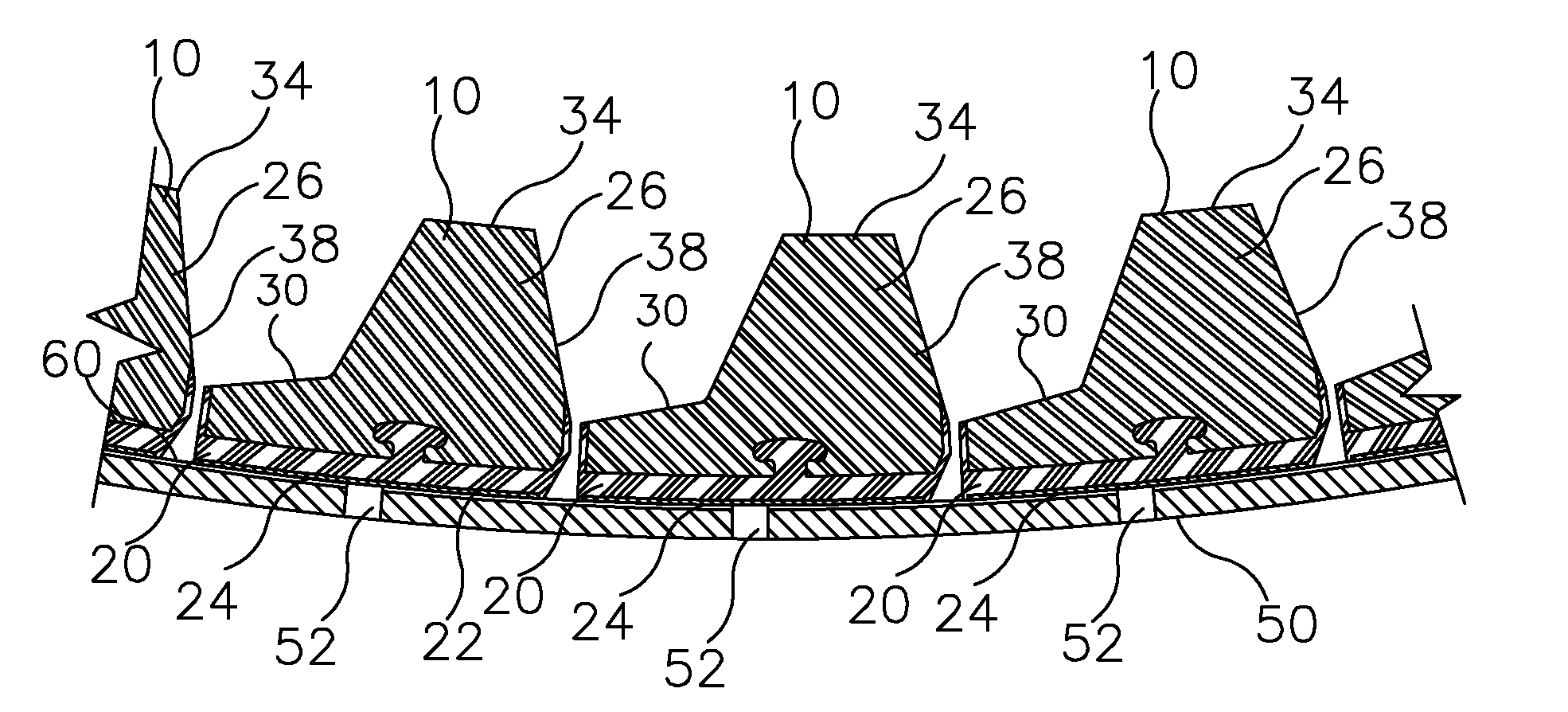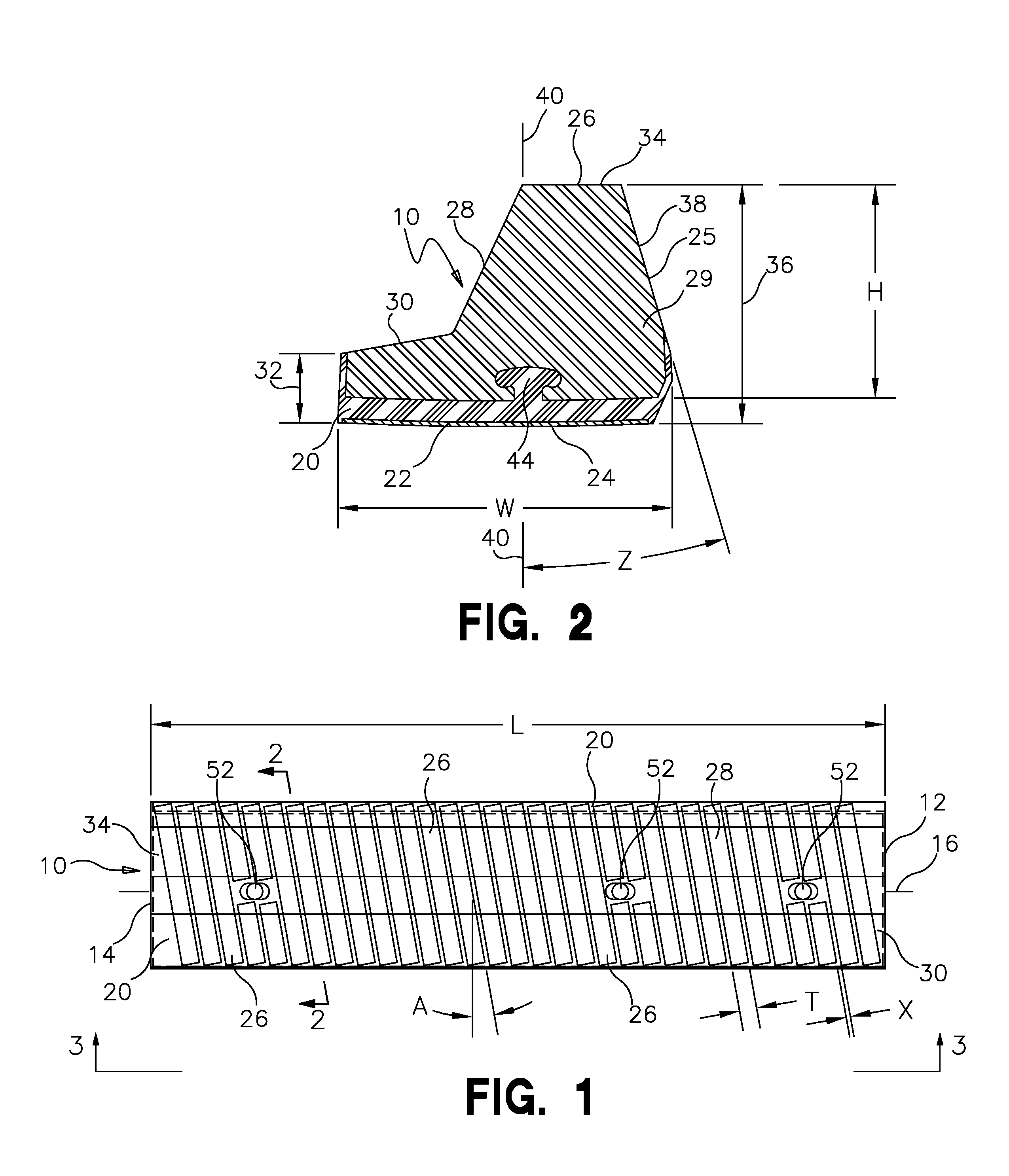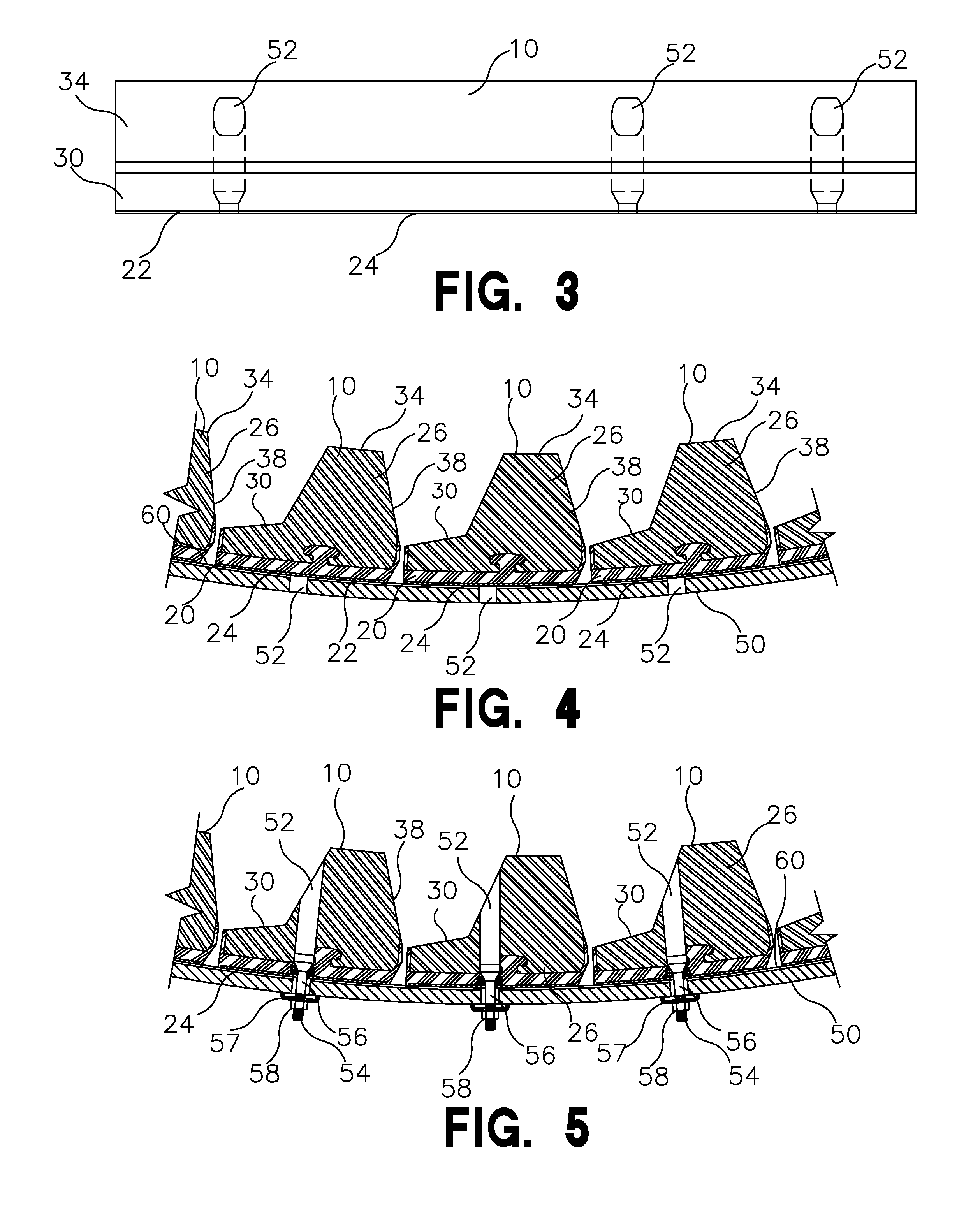Mill Liner For A Grinding Mill
a technology for grinding mills and mill lines, which is applied in the direction of chemistry apparatus and processes, grain treatment, cocoa, etc., can solve the problems of requiring replacement of elements, and reducing the service life of mill lines, so as to facilitate handling and replacement, and less prone to cracking
- Summary
- Abstract
- Description
- Claims
- Application Information
AI Technical Summary
Benefits of technology
Problems solved by technology
Method used
Image
Examples
Embodiment Construction
[0030]Referring to the drawings, FIG. 1 illustrates the full length of a mill liner element 10 in accordance with one aspect of the disclosure. The mill liner element 10 has a length L extending between a first end 12 and a second end 14, and a longitudinal axis 16. The longitudinal axis 16 of the mill liner element 10 is conventionally parallel to the axis of rotation of a grinding mill shell or drum (not shown). The dimension of the length L of the mill liner element 10 may, in one conventional form, be sized to extend over the entire length of the grinding mill drum or shell (i.e., as measured in the direction of rotational axis of the grinding mill shell). However, the mill liner element 10 may be sized in length L to be less than the length of the grinding mill shell, such that more than one mill liner element 10 may be placed end-to-end to extend over the length of the grinding mill shell, most commonly with at least two elements in an end-to-end configuration.
[0031]FIG. 2 ill...
PUM
 Login to View More
Login to View More Abstract
Description
Claims
Application Information
 Login to View More
Login to View More - R&D
- Intellectual Property
- Life Sciences
- Materials
- Tech Scout
- Unparalleled Data Quality
- Higher Quality Content
- 60% Fewer Hallucinations
Browse by: Latest US Patents, China's latest patents, Technical Efficacy Thesaurus, Application Domain, Technology Topic, Popular Technical Reports.
© 2025 PatSnap. All rights reserved.Legal|Privacy policy|Modern Slavery Act Transparency Statement|Sitemap|About US| Contact US: help@patsnap.com



